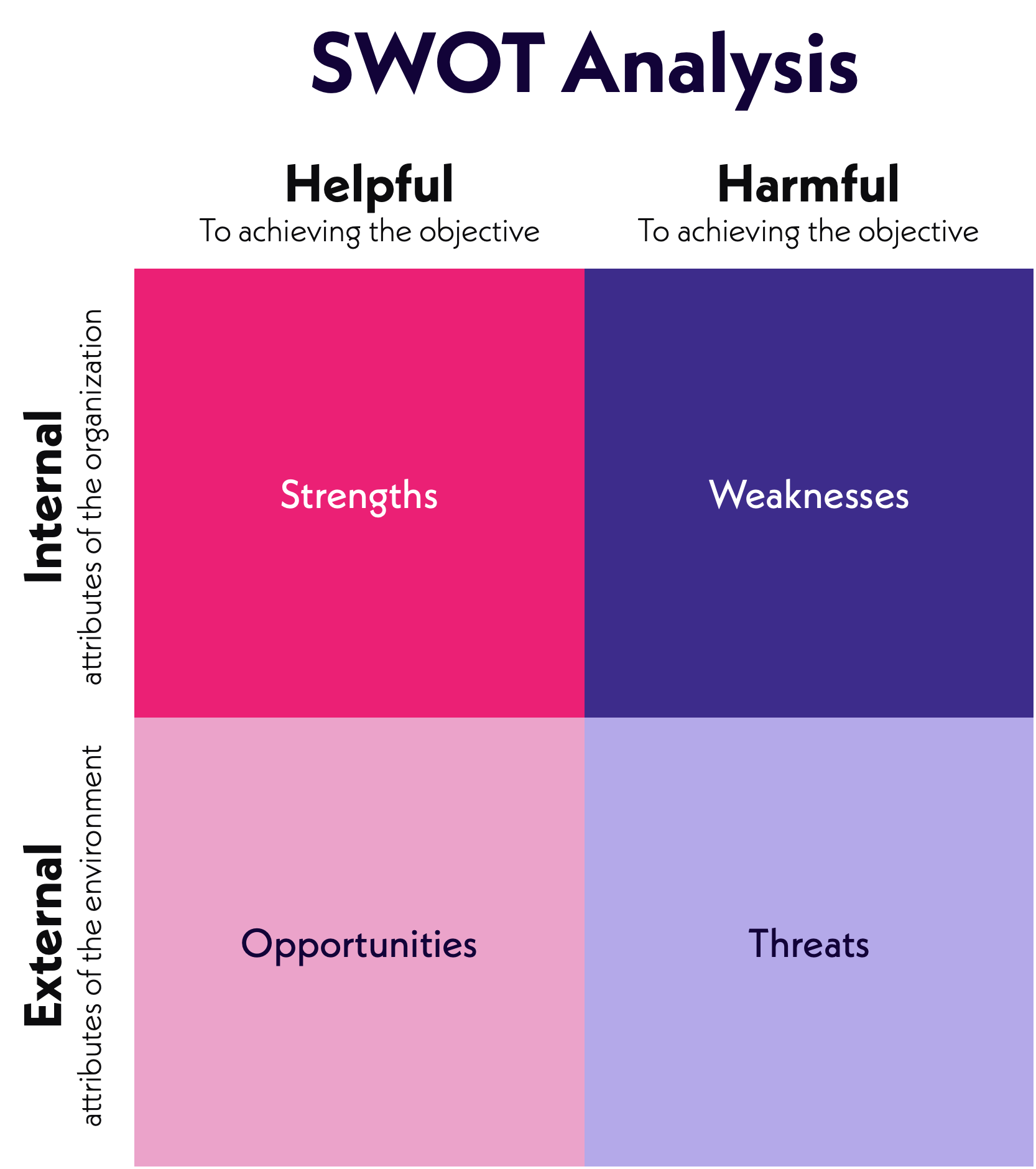When organizational trust is high, the traditional SCR structure we shared previously works pretty well. Your audience will generally accept your resolution and the format helps you build conviction around it. In circumstances where trust is an issue, a hybrid approach to SCR often works better.
The hybrid approach I recommend incorporates one of two analytical frameworks; SWOT or SOAR. When there's a lack of trust, it's important to present multiple options for resolutions. SWOT and SOAR are good for highlighting the opportunities and risks of different solutions, which increases the level of confidence to prioritize next steps. These acronyms may be familiar to you, but as a reminder, here’s what each stands for.
SWOT - An analysis used to identify the key internal and external factors important to achieving an objective. SWOT stands for: Strengths, Weaknesses, Opportunities, and Threats. Visualized with a 2x2 grid, the analysis focuses on the internal strengths and weakness of an organization and the external opportunities and threats presented to an organization. SWOT is a well-known structure commonly used inside large corporate environments.

SOAR - A stronger option for smaller, less-developed organizations, SOAR stands for Strengths, Opportunities, Aspirations, and Results. The main difference between SOAR and SWOT is a primary focus on the positive end of the spectrum. SOAR analysis covers the asserted strengths and opportunities of the current state of an organization, as well as the future aspirations and results that drive organizational action.

SWOT is used all the time IRL
Personally, I've found SWOT to be the more familiar and understood version in the real world. Since it's a technique used quite frequently, I'm just going to focus on it in this email. Strengths and Opportunities look at pros, while Weaknesses and Threats are all about the cons. Here are some example questions you can use as prompts to conduct the analysis:
Strengths focus on internal factors:
- What makes this option unique?
- What is most valuable to stakeholders with this option?
- What makes this research option better than the others proposed?
- What unique advantages does your organization have?
Opportunities focus on external factors:
- What ongoing trends will this option support?
- What missing links for customers will be provided with this option?
- What makes this option most relevant to customers?
- How does this option create a competitive advantage?
Weaknesses focus on internal factors:
- What improvements won’t be addressed with this option?
- What issues will this option not solve?
- What knowledge or skills are lacking to make the option a reality?
- What budget or headcount issues will arise with this option?
Threats focus on external factors:
- What are the negative aspects this option brings?
- What potential competition arises with this option?
- Are customers already expecting something else?
- What external factors might prevent this option from working?
By incorporating SWOT or SOAR analysis into your SCR storytelling, the only elements that change are the resolutions. Rather than one answer, present multiple options with pros and cons can help you keep moving forward. I’ve found this structure incredibly helpful to getting alignment quickly when multiple stakeholders are involved in a decision.
Btw, if you’re working with partners who want to be heavily involved in the decision, including SWOT or SOAR can help you show how there's risk in every decision. If you’re working with a devil’s advocate, be ready with SWOT or SOAR scenarios when they chime in: “I’m glad you mentioned that Todd. We looked into that and here are the scenarios we worked through. If you have any additional information that would be helpful, we’d be happy if you could share.”
Resources
Learn more about SWOT
Learn more about SOAR
SWOT and SOAR analysis are two of the most effective ways to communicate options. In the real world, there are multiple paths teams can take to achieve a goal. Using either of these frameworks helps leadership teams feel more confident in making a decision moving forward.

